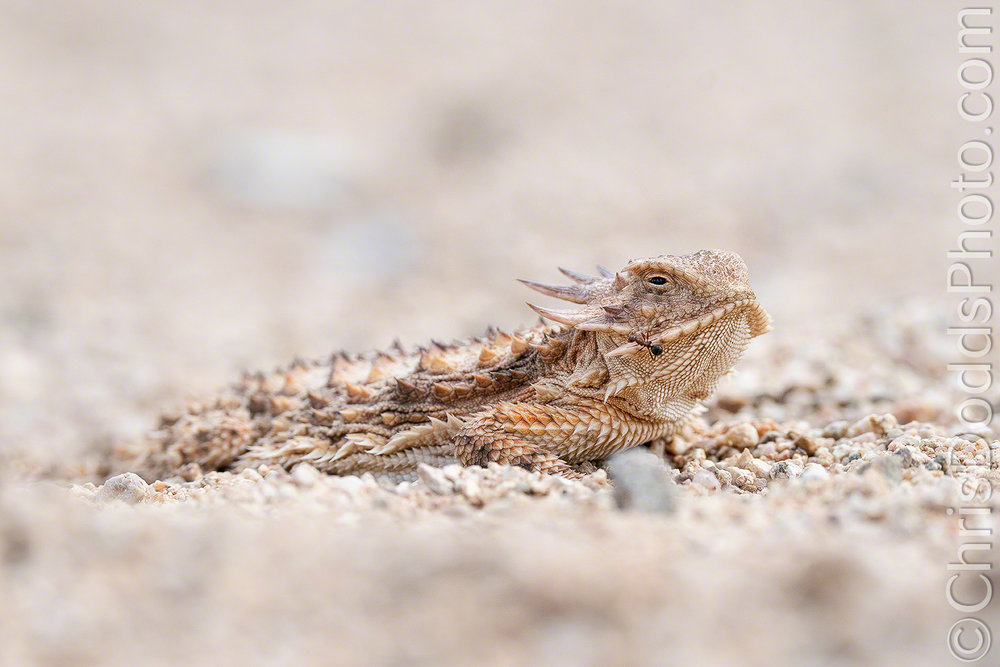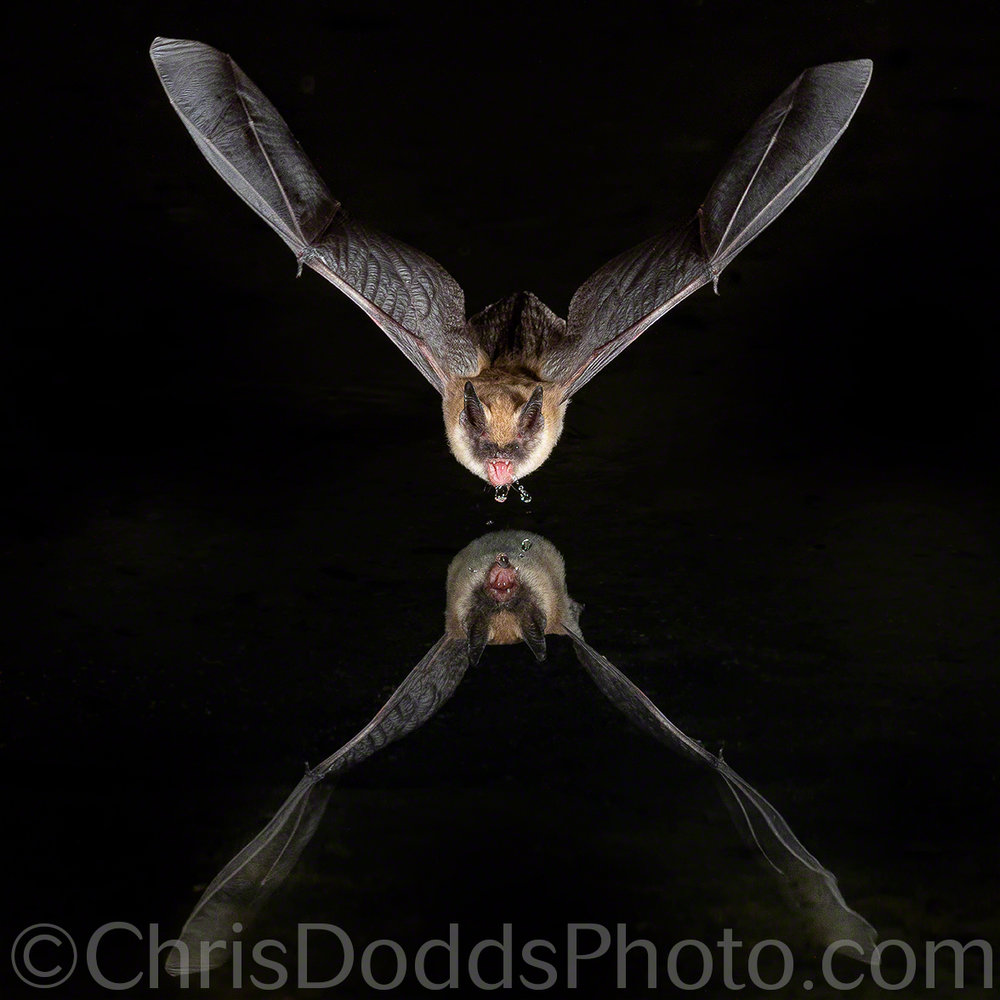 Regal Horned Lizard and Harvester Ant (Phrynosoma solare) in the desert Box Canyon, Arizona, USA. Image Copyright ©Christopher Dodds. Sony Alpha a9 Mirrorless camera & Sony FE 200-600mm f/5.6-6.3 G OSS Lens @600mm ISO 800, f/8 @ 1/640s Manual exposure. Full Frame.
Regal Horned Lizard and Harvester Ant (Phrynosoma solare) in the desert Box Canyon, Arizona, USA. Image Copyright ©Christopher Dodds. Sony Alpha a9 Mirrorless camera & Sony FE 200-600mm f/5.6-6.3 G OSS Lens @600mm ISO 800, f/8 @ 1/640s Manual exposure. Full Frame.
Here's another from my bat photography workshop in Arizona. We had a great time exploring and searching for wildlife during our morning excursions. I spotted this Regal Horned Lizard on the dirt road while driving towards Box Canyon.
Regal Horned Lizards eat mainly Harvester Ants; as many as 2,500 in a single meal!
Do consider joining me in Arizona next September for my annual High-speed bat photography workshop. CLICK HERE to learn more.


